Expecting “the unexpected”
Hong Kong Disneyland’s completely original land themed to “adventures,” “supernatural elements,” and “the unexpected” would turn out to be among the most unusual and enigmatic modern Imagineering concepts yet. Mystic Point – the capstone of Hong Kong Disneyland’s epic growth spurt – would be anchored by a dark ride. In The Haunted Mansion: Imagineering a Disney Classic by Jason Surrell, Imagineer Robert Coltin explained why:
“There weren’t that many dark rides in the park, so we felt that a Haunted Mansion-type experience was the right thing”
Given that Hong Kong Disneyland opened in 2005 with just two dark rides – The Many Adventures of Winnie the Pooh and Buzz Lightyear Astro Blasters – and had only added “it’s a small world” in the four years since then, a Haunted Mansion was an obvious addition.
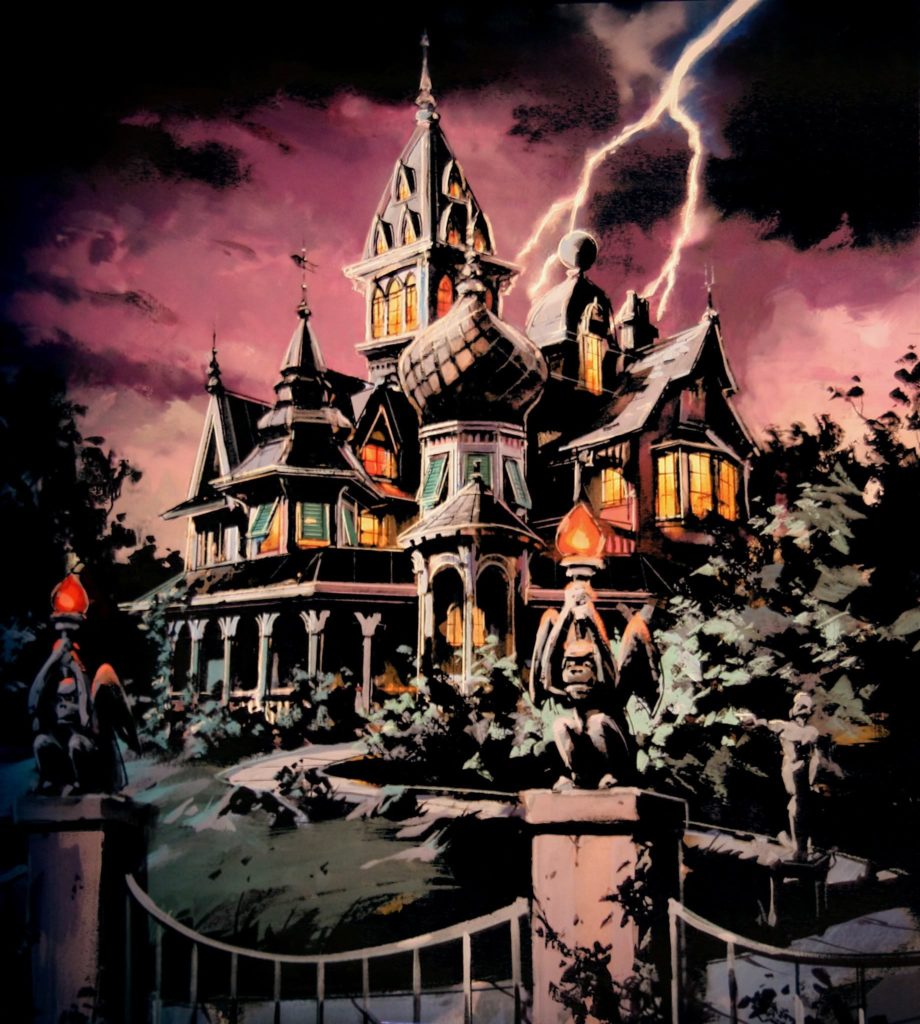
Except… it wasn’t that easy. Many Eastern cultures have a very different relatonship with the concept of “ghosts” than the Western world. In Chinese culture especially, “ghosts” are traditionally malevolent and harmful. “Friendly” ghosts would only be understood through the cultural lens of the reverence and respect traditionally bestowed upon ancestors, not made into “grim, grinning” ghouls and singing spirits. The Haunted Mansion was a concept that wouldn’t translate.
What do Imagineers do when a ride can’t be easily copied between resorts? They innovate their way around it.
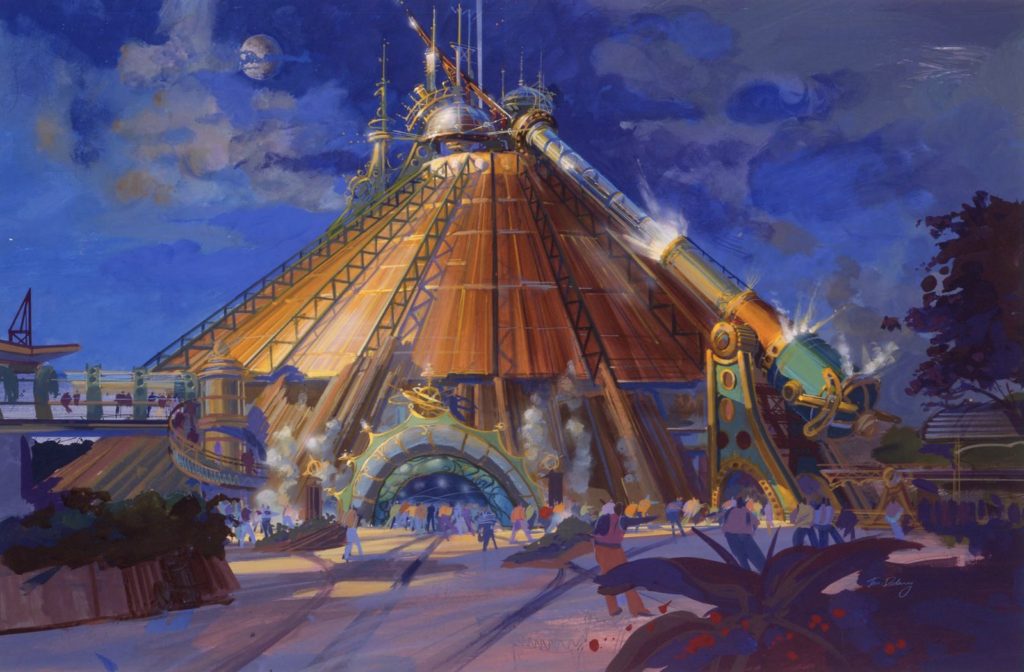
Look at the way designers adapted the white, symmetrical Space Mountain with its mid-century Americana and Space Race styling into a retro-futuristic, literary, fantasy jaunt to the moon and back aboard the Lost Legend: Space Mountain – De la Terre a la Lune in 1995, or how Paris’ own Haunted Mansion had axed the singalong in favor of a cinematic, operatic, dramatic, and dark Modern Marvel: Phantom Manor.
Or for that matter, what happened when Tokyo Disney Resort wanted a copy of the Twilight Zone Tower of Terror… despite the classic 1960s CBS sci-fi anthology series being entirely unknown in Japanese culture? To build that park’s Twilight Zone-free drop ride, Imagineer Michael Sprout had played off of an existing (but subtle) reference in DisneySea’s Fortress Explorations and its “in-universe” founding secret society, S.E.A.: The Society of Explorers and Adventurers.
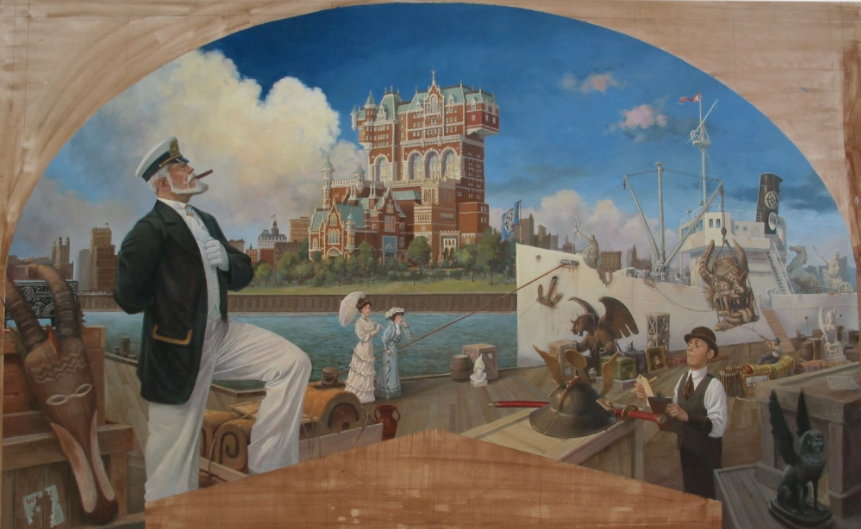
Sprout had crafted an entire narrative around a member of the turn-of-the-century S.E.A. class – the nefarious Harrison Hightower III. A globetrotting thief who hoarded his stolen treasures in a New York City hotel bearing his name, Hightower’s story came alive aboard the one-of-a-kind, sensational Modern Marvel: Tower of Terror.
So it’s no surprise that when Michael Sprout was asked to work on adapting the Haunted Mansion for a culture where hauntings wouldn’t do, he started back at S.E.A, and with the first of five characters needed to bring Mystic Manor to life.
1 and 2. Mystic and the monkey
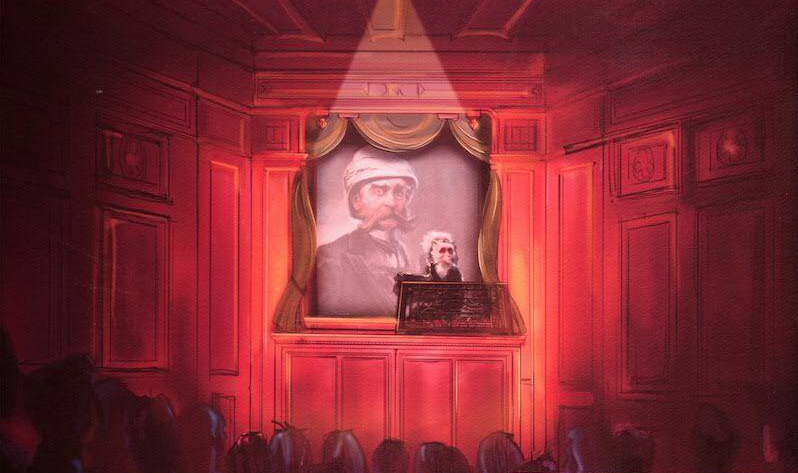
How do you create a haunted mansion without ghosts? Mystic Manor had the answer. From early on, the attraction became a tour through the stately home of another S.E.A. member – albeit, a more earnest and beloved one – Lord Henry Mystic. Mystic would reside in an eclectic manor stuffed with mementos from his own personal S.E.A. travels.
But unlike Hightower, Lord Mystic would be a lovable type; a welcoming uppercrust British bon vivante who adored the opportunity to share the wonders he’d been gifted on his travels with those who found their way to his remote estate.
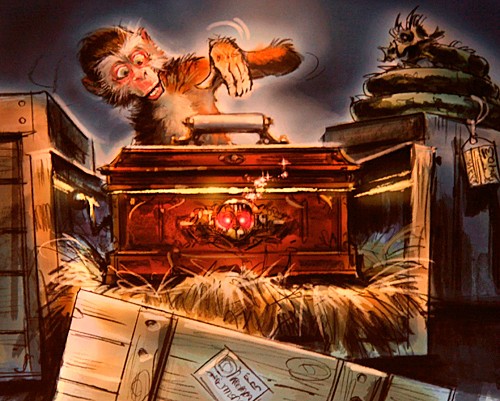
Mystic’s newest acquisition, though, would be something downright magical: an ancient music box whose enchanted tunes were said to grant life to the lifeless.
But when Albert the monkey – a personification of mischief in Chinese tradition – can’t help but touch the sparking, gem-encrusted music box, its ethereal and inexplicable music would rise up, spreading through the home and bringing its international artifacts to life. In fact, in that way, Mystic Manor would adapt some of the oddities and objects once dreamed of as part of Rolly Crump’s Museum of the Weird!
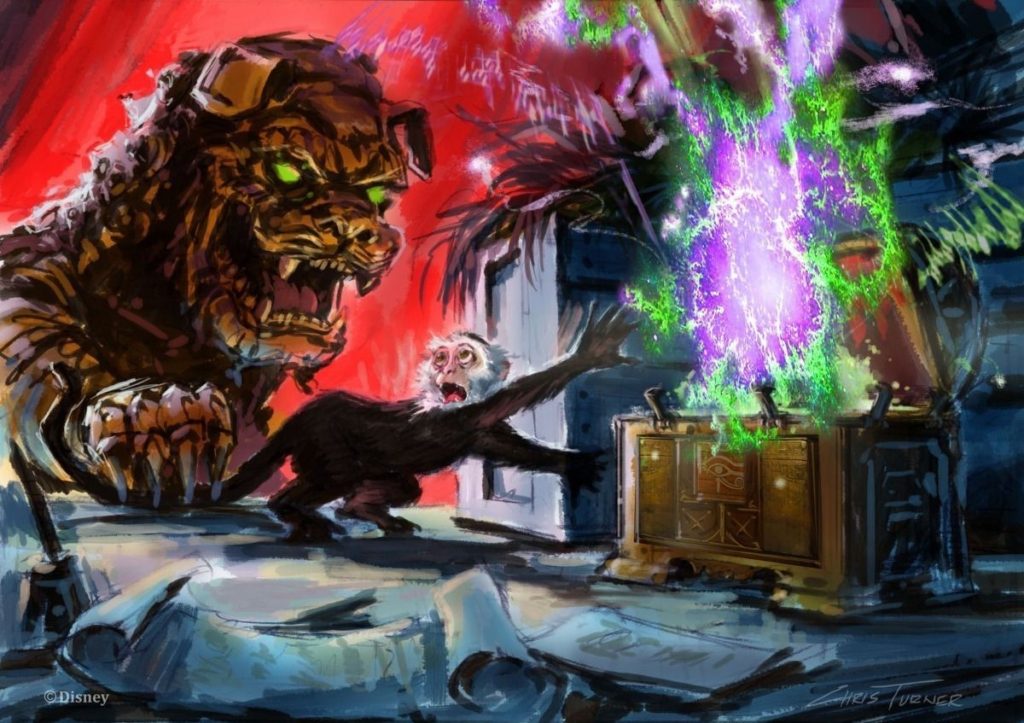
However, as Imagineer and designer Ethan Reed later recalled to Jungle Skipper, there’s a reason that the characters we see in the artwork that debuted at the 2009 D23 Expo differ from the final product. Character design wasn’t yet complete. Reed said:
“So right after the D23 convention, we were feeling really good about the show. We were adjusting story points and most importantly visual storytelling through the storyboard process. Mark [Shirmer, project lead] was not convinced that the design we landed on in the previous iteration was working, so Mark asked me to take another stab at redesigning Albert. At the same time, he asked me to develop some sketches for merchandise opportunities for the attraction.

I produced dozens of realistic Albert designs, and one day while animating Lincoln at the theater at Disneyland, I took a break and pulled out the sketchbook. So many things were going through my head. Danny Elfman had expressed interest in joining our little team. I had just watched “Nightmare Before Christmas” with my kids and was thinking how great the stop-motion look could be…
[…] So what came out was Lord Henry we know, and an Albert with an elongated muzzle which I based on the Tiki Room drummers – which are monkeys, not the crocodiles I always thought they were as a child. I was happy with the sketch and thought they would never do anything so bold, but I thought it could work for merchandise, a stylized look something that would look great on a coffee mug.”
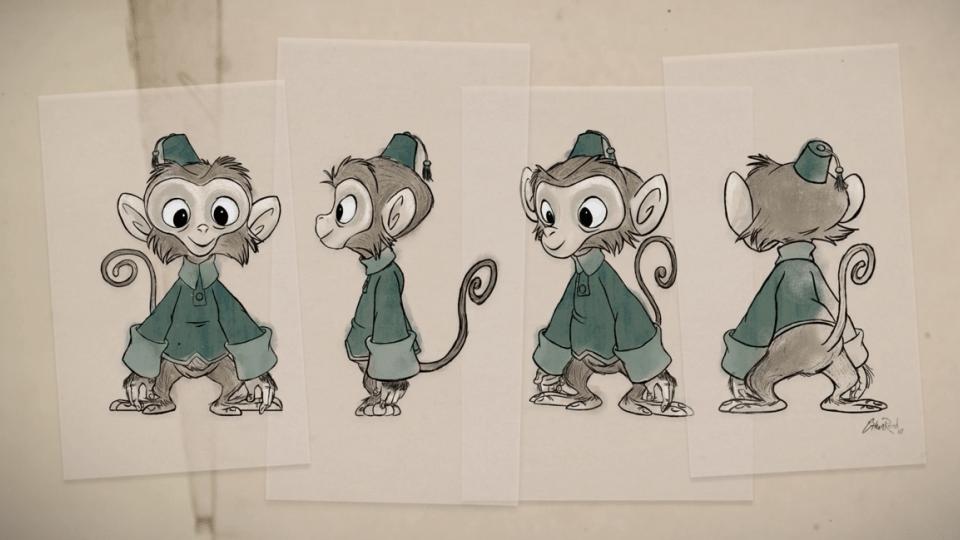
At a 2013 D23 Expo presentation on the ride, lead Imagineers Joe Lanzisero and Mark Shirmer reflected on the change (as just one part of a reflection on the ride transcribed by Theme Park Insider):
“Originally, Lord Henry and Albert were going to be a lot more realistic looking. I have a background in animation, so I think about these things – the expressiveness of an animation character; giving them big eyes, and exaggerated features.
The early Imagineers knew this. Marc Davis and Blaine Gibson, when they created all the characters for the Haunted Mansion and Pirates – they’re not real. The proportions are all exaggerated. The eyes are bigger. The limbs are exaggerated. All that’s for an easy read. In our attractions you just have seconds to tell people what they’re supposed to be feeling about this character.”
Lord Henry Mystic and Albert got a ‘toon up. The duo would now join Harrison Hightower in the late-1800s class of S.E.A. Even if their more animated appearance would make them stand out among their classmates, Imagineers were right…

The “cartoonification” instantly and effectively conveys a lot more about the characters than their photorealistic versions (at the top of this section) would have. It turns Lord Mystic an instantly-loveable and humorously eccentric grandfather figure and Albert into an icon-ready original character created just for Disney Parks.
And that brings us to our third character…
3. The mansion
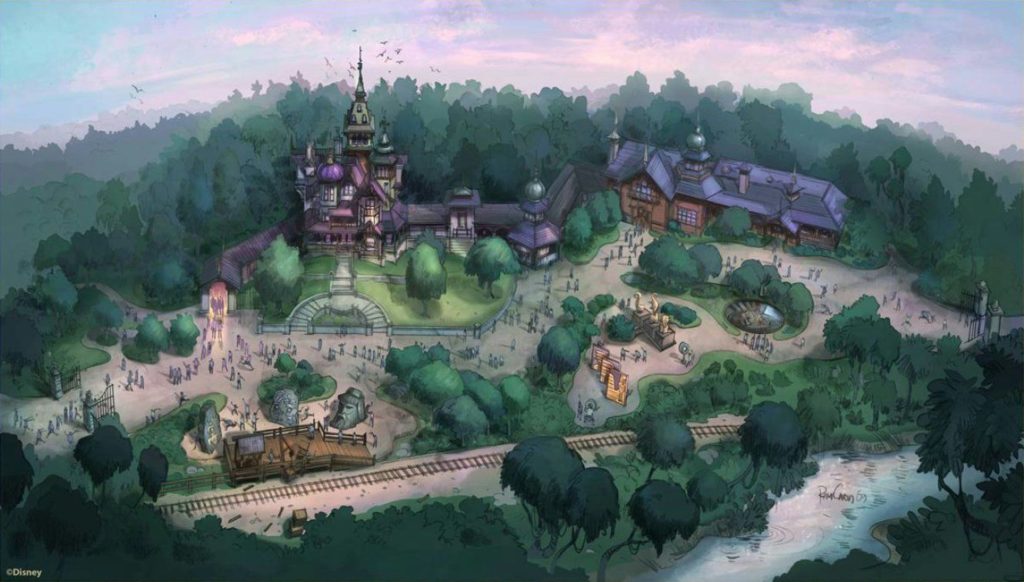
Mystic Point features the unusual Garden of Wonders – a collection of oversized antiquities too large to fit inside Mystic’s private estate – that bamboozle, astound, and amaze with living illusions set among the steppes of the riverbank.
Of course, the icon of this mysterious land is the towering Mystic Manor estate, plopped on a hillside overhead. Imagineer Mark Schrimer explained the home’s eclectic architecture, noting that Lord Mystic “wanted a little bit of home in this tropical wilderness. He started with the essence of a Victorian manor but of course wanted to embellish it with all the different places that he’s been. So it’s this eclectic Victorian manor sitting in this cleared out jungle along the river.”
As confirmed by our friends at Disney and More, the Manor’s eccentric appearance was inspired by the Carson Mansion in Old Town Eureka, California… But there’s a new layer of fantasy here.
It’s almost certain that Mystic Manor also owes some of its eccentricity to the very real Winchester Mystery House in San Jose, California – the supposedly-haunted home and sprawling estate of firearms manufactuing widow Sarah Winchester, who ordered that construction continue on her home every minute of every day for decades to keep the spirits of those killed by her family’s rifile companies at bay. Walt was said to be particularly fascinated by the beautiful but odd mansion with its doors to nowhere and windows in the floor, perhaps using it as inspiration in early Haunted Mansion concepts.
And indeed, Mystic Manor is one of the most beautiful “mansions” in Disney’s entire playbook with ornately carved Victorian porches and spiral staircases, Norse steeples, arabesque domes, pagoda turrets, artisan colors, and iron gas lamps. Equal parts hypnotic and welcoming, the structure reads intentionally warm: Mystic is a philanthropic type, all too happy to welcome weary travelers into his home!
4. The music
Music has been at the heart of every Disney Parks masterpiece attraction. Whether the Sherman Brothers’ “One Little Space,” “There’s a Great, Big, Beautiful Tomorrow,” or “The Tiki, Tiki, Tiki Room” or X Atencio’s “Grim Grinning Ghosts” or “Yo Ho (A Pirate’s Life for Me),” music makes all the difference. And in Mystic Manor, music would be more than mere atmosphere; it would be a character in and of itself – the “magic” personified, spreading through the manor.
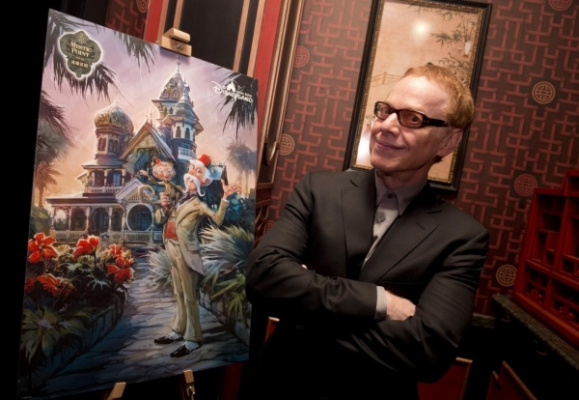
Very early on in the ride’s design – when it was still nothing more than concept sketches – Disney brought on composer and songwriter Danny Elfman, known for his frequent collaborations with Tim Burton and thus the dark songs and score in Nightmare Before Christmas, Beetlejuice, Edward Scissorhands, Batman and Batman Returns. Eflman said of the process:
The thing that got me really into doing this ride was they said it was inspired, in part, by a ride that I loved when I was small, called The Haunted Mansion. So it was like a cousin to The Haunted Mansion; and because The Haunted Mansion was a part of my musical subconscious, I really wanted to do something that, if it survived – which I hope it will for many years – it will become part of the subconscious of children in many generations. Maybe if I’m lucky, it will be like The Haunted Mansion and last 40 years or something. And so that’s really the big appeal, that it was inspired by that: that I might do something that will become part of the musical subconscious culture of a generation.
5. Magneto-Electric Carriage
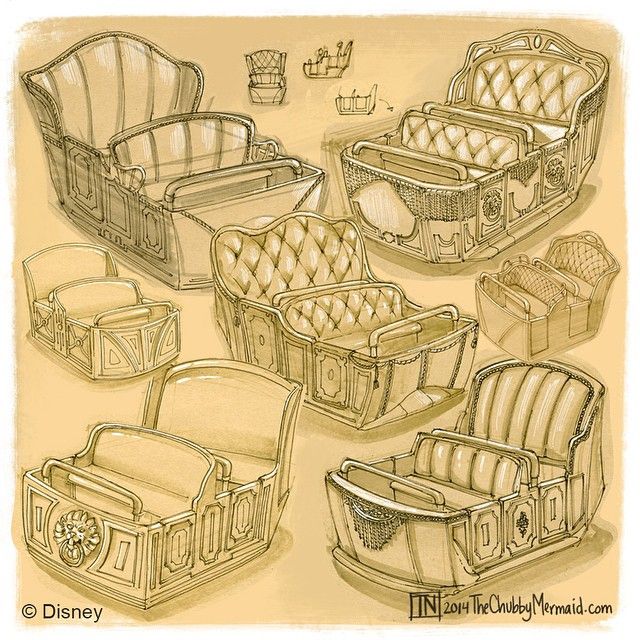
In 2001, Tokoyo Disneyland debuted a new kind of dark ride technology. While “trackless” dark rides had existed since the ’90s, they were often slow-moing and cumbersome, with autonomously guided vehicles simply tracking and following a wire embedded in the floor. Pooh’s Hunny Hunt changed that. Rather than a predetermined path to follow, its free-wheeling hunny pots were governed by LPS – local positioning system.
We traced the technology in both our look at the best (and worst) trackless dark rides on Earth, plus in our Seven Modern Wonders of the Theme Park World Extra feature. By using either RFID pucks or Wifi, multiple LPS ride vehicles can enter a scene at once. They don’t just track a wire; they can diverge down different paths, “dance” around one another, engage in “near miss” moments, change direction, and move in an orchestrated pattern.
So while some ride vehicles recede into the background (like the Doom Buggy), the Mystic Magneto-Electric Carriage would be a character in and of itself; an invention by Lord Mystic, able to effortlessly, magnetically glide through the home in plush comfort and style… and possibly, to be affected by the music itself. In fact, according to the Passholder-exclusive art above, Lord Mystic first revealed his invention at the 1900 Exposition Universelle in Paris (the same World’s Fair attended by Jules Verne and H.G. Wells and visited by the Lost Legend: The Timekeeper! Talk about a small world…)!
With Mystic, his monkey, the mansion, the music, and the Magneto-Electric Carriage ready to go, our tour of Mystic Manor can begin… Let’s head inside.





